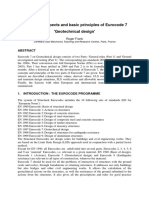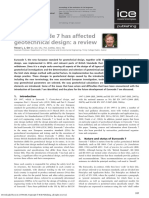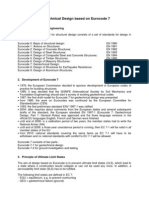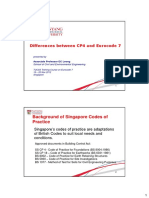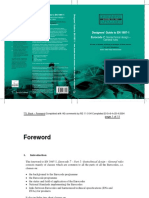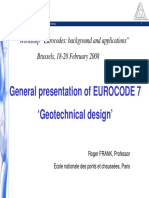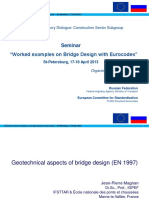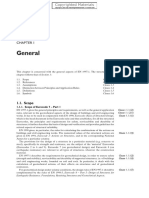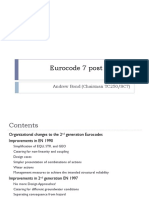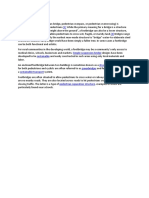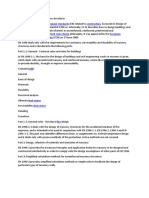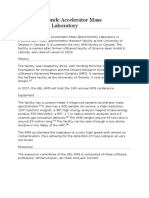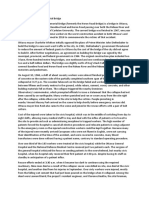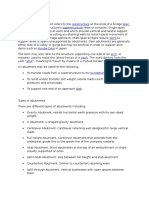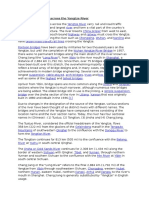0% found this document useful (0 votes)
63 views2 pagesEurocode 7 Introduction
Eurocode 7 is a European standard for geotechnical design that describes how to design geotechnical structures using limit state design philosophy. It is published in two parts, with Part 1 covering general rules for geotechnical aspects of building and civil engineering design. Part 2 provides supplementary rules for ground investigation and testing to be used with Part 1. Eurocode 7 aims to establish common design rules across Europe and became mandatory for member states to adopt in 2010.
Uploaded by
RobynCopyright
© © All Rights Reserved
We take content rights seriously. If you suspect this is your content, claim it here.
Available Formats
Download as PDF, TXT or read online on Scribd
0% found this document useful (0 votes)
63 views2 pagesEurocode 7 Introduction
Eurocode 7 is a European standard for geotechnical design that describes how to design geotechnical structures using limit state design philosophy. It is published in two parts, with Part 1 covering general rules for geotechnical aspects of building and civil engineering design. Part 2 provides supplementary rules for ground investigation and testing to be used with Part 1. Eurocode 7 aims to establish common design rules across Europe and became mandatory for member states to adopt in 2010.
Uploaded by
RobynCopyright
© © All Rights Reserved
We take content rights seriously. If you suspect this is your content, claim it here.
Available Formats
Download as PDF, TXT or read online on Scribd
/ 2














